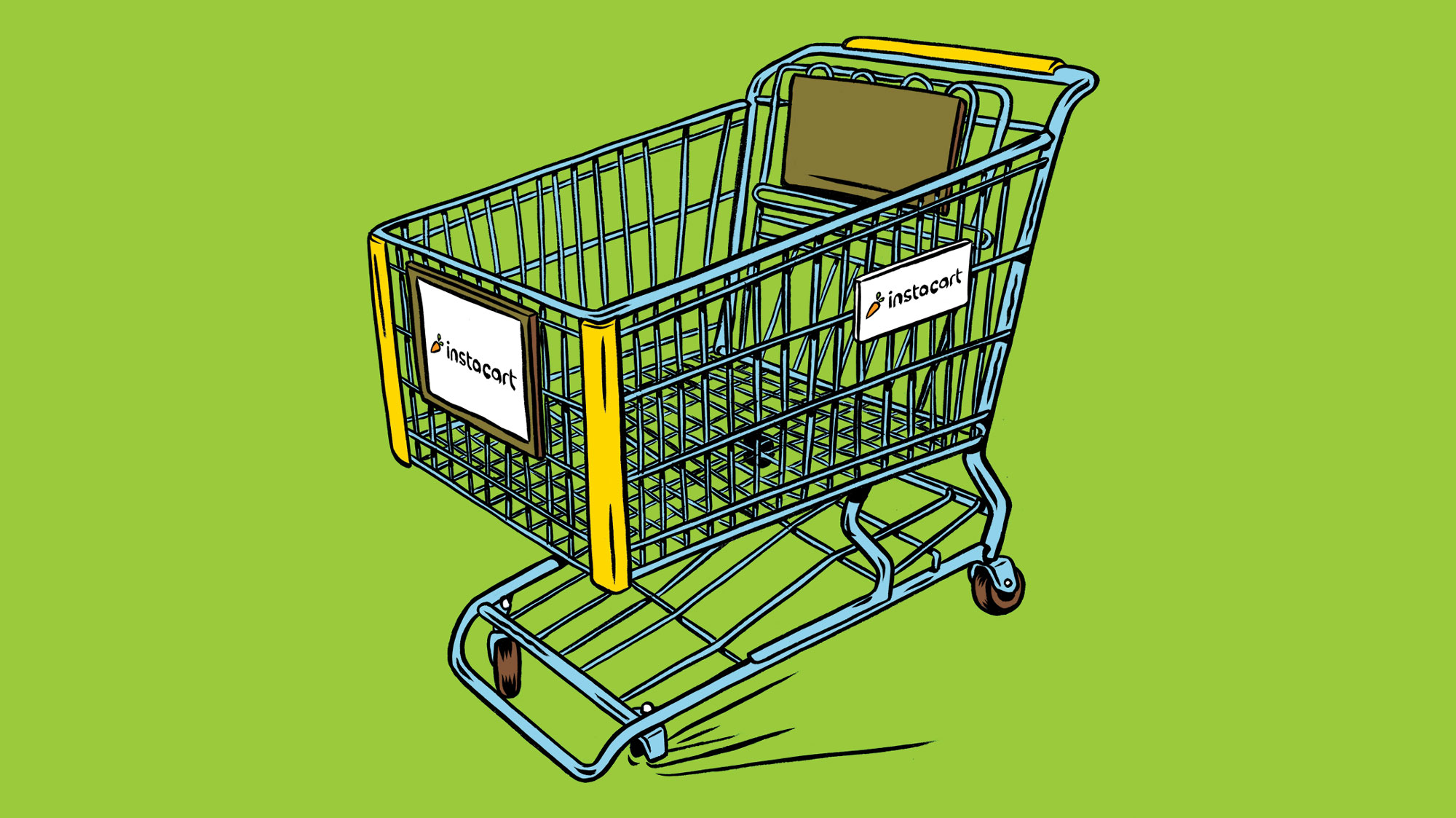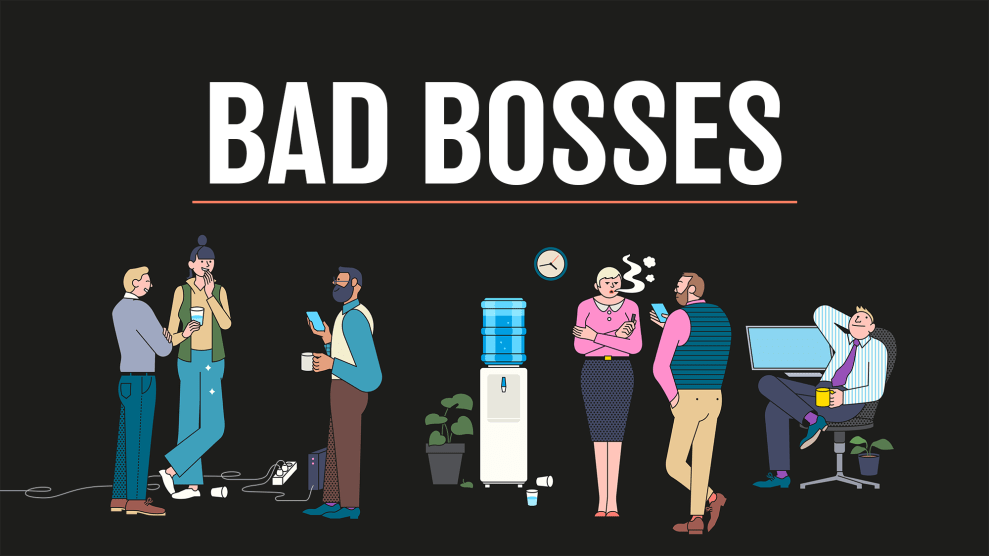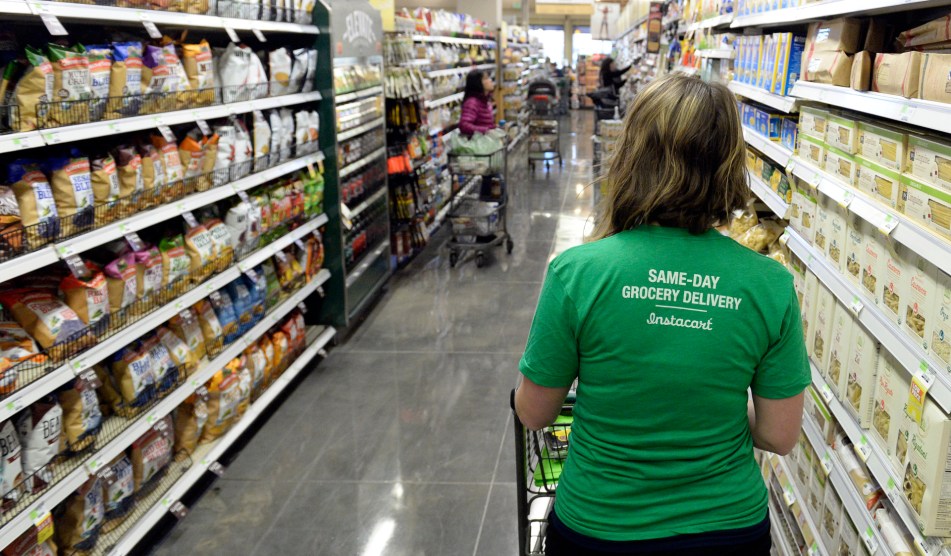In our January + February 2022 cover story, we attempted to answer a simple question: What the hell happened to labor since the pandemic began? It wasn’t one thing. But this package—through a series of worker stories as told in their own voices, interviews with experts, and dissections of media narratives—attempts to make sense of the moment. You can find the full package here.

Alice, a former Instacart worker who asked to use a pseudonym to protect her from potential retaliation from the company, has a boss. But it is not a person. It is an opaque algorithm.
When something goes wrong, there is neither an office Alice can walk into nor a person she can call. There are only the anonymous agents she chats with through an app. They, too, are beholden to a line of code of someone else’s design.
In March, a new funding round doubled Instacart’s valuation to $39 billion. The company’s thirtysomething founder, Apoorva Mehta, is now a billionaire many times over. As an “independent contractor” in the gig economy, Alice lacks basic labor protections, including the right to form a union or receive overtime pay. This is what it was like to find herself beholden to an algorithm in the midst of a pandemic.
I’m originally from northwest Iowa and settled in Des Moines 15 years ago. In college, I studied interior design and psychology. I started serving in various restaurants very young and kind of progressed up the ladder. I was set to begin working at an events space. Construction got severely delayed, and it became clear that it might not happen. So, I had to move on.
I started doing Instacart 40 to 50 hours a week in January 2020. Two weeks to a month after I started, I thought it was amazing. I found it great to make people happy and do something they needed. I thought it could always be something I did on the side if I wanted a little extra cash. It was almost like a drug in the beginning. I could always do better, go faster, and make more if I worked harder.
I want to say it was March 2020 when we were instructed to leave orders at the door of people’s houses and send a photo. It became more stressful to shop, not only because of the health concerns, but because stores were out of things constantly and Instacart’s stock often does not align with the store’s inventory. If a customer has tipped a percentage of their order total and the store is out of five items, we lose that money.
I wake up at 3 or 3:30 in the morning to be able to get in a little exercise and dog time and be ready for work at 5:30, because on a good day, that’s when the first batches will be released. From 5:30 on, I’m just scrolling. I’m not a phone person, so it’s very odd to just stare at my phone constantly. The good jobs get claimed in like 0.2 seconds. Sometimes I’m scrolling until 7, 7:30, before I leave the house.
From there, if there’s not a trip immediately, I’ll try to park close to places that are getting orders. But lately that’s been frustrating because even though there’d be a glowing red orb around a certain store, you’re not seeing orders from that store. Today was bad. I think I spent three or four hours in my car just scrolling and driving to a different store thinking I was not by the right hotspot.
On a typical day, I shoot for 75 percent actually working. But that can get closer to 60 to 40. On a really bad day, it’s 50-50. You might just give up early because you can’t stand waiting anymore. I usually work until 4 p.m. unless I’ve got a big bill coming up. Then I’ll push through and work for as long as I can.
Things are heavy. More often than not, I have a pallet cart. On a good day, I consider it a free workout. But I also have a foot condition. On my right foot, I only have one toe. It hadn’t really started giving me trouble until I hit 30ish. Now it hurts at the end of the day.
Whether an order is worth taking depends on how long I’ve been sitting and how desperate I am. At 5:30, I like to have $35 or more per batch. The lowest I go generally is $20. If I’m really desperate sometimes I’ll just do a smaller, lower-paying trip to fill the time. About 75 percent of my pay comes from tips. Since we can’t rely on Instacart to compensate us fairly, we’re putting a lot of faith in the customers.
Customers can remove tips after an order is completed. It’s called tip baiting. If you put a large tip, it will be taken instantly. People will shop, they’ll do their best, you’ll get your stuff, and then you always have the option to edit the tip after the fact. That can mean removing it entirely. It’s happened to me twice.
Last year, it was very normal to see five to nine batches at a time. For the past four months, I see four maximum, and they’re definitely lower-paying batches. Instacart has never been completely transparent about the pay. It’s always 60 cents a mile in Iowa, but then the amount on top of that to total the batch earnings has gradually decreased.
When I started, I kept very detailed financial records of every trip. I’m making a third of what I made last year despite working the same hours. Around this time last year, I was making $25 to $30 an hour on a weekday before expenses, and $35 to $40 an hour on weekends. These past two months, I’ve averaged $12 an hour. After expenses, I’ve been making $7.50 to $8. I realized that could be partly because the pandemic was ebbing, but you also notice that the Instacart pay structure has changed.
We’re at the point now where Instacart can offer a batch to pick up 44 items for two different customers, drive 20.3 miles total to deliver both, and offer $13.53 before tip. They claim to compensate 60 cents per mile in that total, meaning the shopping pay is $1.35 before tip. It’s horrendous.
They never release an update and tell us anything is changing. You just watch it happen. It’s maddening. The developers are releasing updates almost constantly, and many are glitchy. Some issues are just irritating. One week my app would close any time I tried to chat with a customer about their order. There was a map feature released recently. Since then the quantity of batches at any given time has greatly decreased. I live in a city with more than 200,000 people. I know that more than one order is available to shop between 6 and 9 a.m., but I’ll only see one at a time, if any.
There’s no option for a shopper to call support. We can only chat. The app will automatically shoot you through the virtual assistant questions every time. You can enter something like “Customer isn’t available” and an automatic menu will come up. You say, “No, this wasn’t helpful.” You do that four times, then you’re connected to chat.
It always starts with, “I can see there are no problems with your account. Have you tried restarting the app? Have you tried restarting your phone?” Then, “You probably need to be closer to the store.” I’ll say, “I’m parked next to other shoppers, and I just saw seven of them go in. I did a speed test. I have good reception here. Why did I not see a single batch and they’re all going inside?” When it’s very obvious we’re all seeing different batches, they say it’s the algorithm. Many issues are chalked up to the mighty algorithm. You realize support is powerless, too.
You also know they have the power to hurt your account. They can block you from getting batches to certain stores. That’s always in the back of your mind. You kind of just want to fall in line.
I wish customers realized how much power they have over us. When someone asks you to message them regarding order replacements and aren’t available by chat to approve anything; when they don’t answer their apartment buzzer and you’re left outside in the heat with 20 shopping bags; when they live in an apartment complex made up of 20 buildings with no clear indicators and zero clarifying directions have been left—these things add so much time to a trip and greatly affect our income.
I will never forget the day when I was at Costco and it was a two-customer trip. I knew that the tip total was $30 but I didn’t know the breakdown of who had tipped what. The customer with the smaller order asked if I could add on 15 cases of water while I was there. That changed the whole experience. I had to change carts and it’s very heavy. They were the first customer and I saw I was going to an apartment. My stomach sank. It was freezing cold outside. It took me forever to find their place. They lived on the third floor. Of course I never saw them face to face. Later in the day, I found out that they had given me a $1 tip. It felt like a slap in the face.
I also had a customer hand me a $100 bill during the holiday season last year. I cried on the spot.
Ratings are also tough. If you drop below five stars, the app is designed to show you available trips a few minutes after five-star shoppers, which is basically devastating when your area is oversaturated with shoppers vying for a limited number of good batches.
I had a day last November that still bothers me. I had received only five-star reviews up to that point. Then I got two one-star reviews in one day. One customer left a comment that her bananas were not green, and the other left no explanation at all. I don’t know which is more frustrating: knowing that I messaged the customer saying the bananas didn’t look as great as I’d like and asking if she’d prefer something else without ever hearing back, or having absolutely no idea what I did wrong with the other order. Your lowest rating is automatically removed, but my average still dropped to 4.98. I needed to shop 100 trips before my average was reset to 5 stars.
I tried to contact support about the reviews. I had already learned to take screenshots of everything I chat with a customer about because you always need proof. I shared the message I’d sent the customer about the bananas not looking great. It was so frustrating for support to say, “We can’t change that, but your lowest rating is automatically removed.”
I said, “Did the other one-star give any feedback?” They said no. And that was it. I just had to swallow it and move on. Until I got my average back up, I wasn’t seeing the early-morning batches anymore. I probably could have made $3,000 more in those two months without those reviews. I think that’s a low estimate.
For me it feels like a dead end more and more every day. You start to doubt your capabilities in a professional sense, which makes it harder to go on any interviews. It’s also been hard on my relationship with my partner because I’m constantly connecting with an app and refreshing.
When there aren’t too many positive things to share about your daily work experience, that’s just not something you want to continually burden your partner with. If someone gives you a tiny compliment in a rating and it’s your work accomplishment for the week, it feels rather pathetic. It just becomes an isolated, frustrating ball of stress. When I don’t have to do it, I will never look back. I will never open the app.
This story is part of our Bad Bosses project, a reported collection of accounts from workers about their terrible bosses and the system that creates them. You can read more about the entire project and find every story here. Annotations—highlighted throughout—can be clicked for further context and comment from other parties. Got your own bad boss story? Send us an email.















